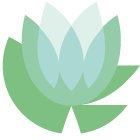Increasingly women are turning to acupuncture as a drug-free approach to a range of issues often experienced in pregnancy that are generally considered ‘normal’ problems.
For over 3,000 years Traditional Chinese Medicine has offered specialised treatment in pregnancy. It considers pregnancy, childbirth and postnatal recovery a window of opportunity to enhance the woman’s well-being.
Today there is a growing body of research that provides supporting evidence for the benefits of acupuncture in pregnancy. Below I point to some of the research relating to pregnancy related issues and how acupuncture may be able to help.
- Morning sickness
- Muscular skeletal pain in pregnancy
- Labour preparation
- Breech and posterior babies
- Pain relief in labour.
Morning sickness
Acupuncture can be an effective treatment for nausea in pregnancy. Research in Australia has shown that when women were treated with traditional acupuncture, with points chosen specifically related to the women’s individual diagnosis, they experienced faster relief when compared to a control group receiving sham acupuncture.
Muscular skeletal pain in pregnancy
Back pain, rib pain, sciatica and pelvic pain are common problems in pregnancy. The pain can often be reduced with acupuncture. The latest Cochrane review examined 26 trials involving 4093 pregnant women with different therapies including acupuncture and physiotherapy. Their findings reported:
- Acupuncture significantly reduced pelvic pain more than usual care alone.
- Acupuncture was significantly more effective than exercise for reducing pelvic pain.
- Acupuncture was more effective than physiotherapy at relieving lumbo-pelvic pain and improving function.
Labour preparation
Treatment to prepare the mother for labour starts three to four weeks before the due date and is then given weekly before labour begins. A German study points to its usefulness in reducing the length of labour, while research from New Zealand indicates a reduction in women requiring medical intervention including induction and caesarean section.
Breech and posterior babies
Treatment to encourage breech babies to turn involves warming a point on the little toe with moxa. During the initial treatment the mother is also taught how to administer moxa herself at home for a period of 10 days.
The most rigorous study to date found moxa was an effective and safe way to correct a breech position when used between 32 to 35 weeks of gestation. The acupuncturist warms a point on the little toes in the session and then the mother is taught how to do this herself at home between treatments.
Pain relief in labour
Acupuncture
Research from Australia and New Zealand found acupuncture effective in reducing pain and the duration of the active phase in labour.
Acupressure in labour
Acupressure is the application of continuous pressure to specific points on the body. Research has found it to be an effective, non-invasive, and easily applicable technique to reduce labour pain.
Research
For a comprehensive review of the research international expert, Debra Betts, offers a useful review of a wide range of the research on the use of acupuncture, acupressure and moxibustion in pregnancy, childbirth and postpartum.
Further information
If you have any questions about what happens in a treatment session, please read my answers to frequently asked questions or contact me.
I offer consultation and follow-up treatments.
Book an appointment
I can help you with a wide range of health problems: please book an appointment or contact me to find out more about how I can help you.

